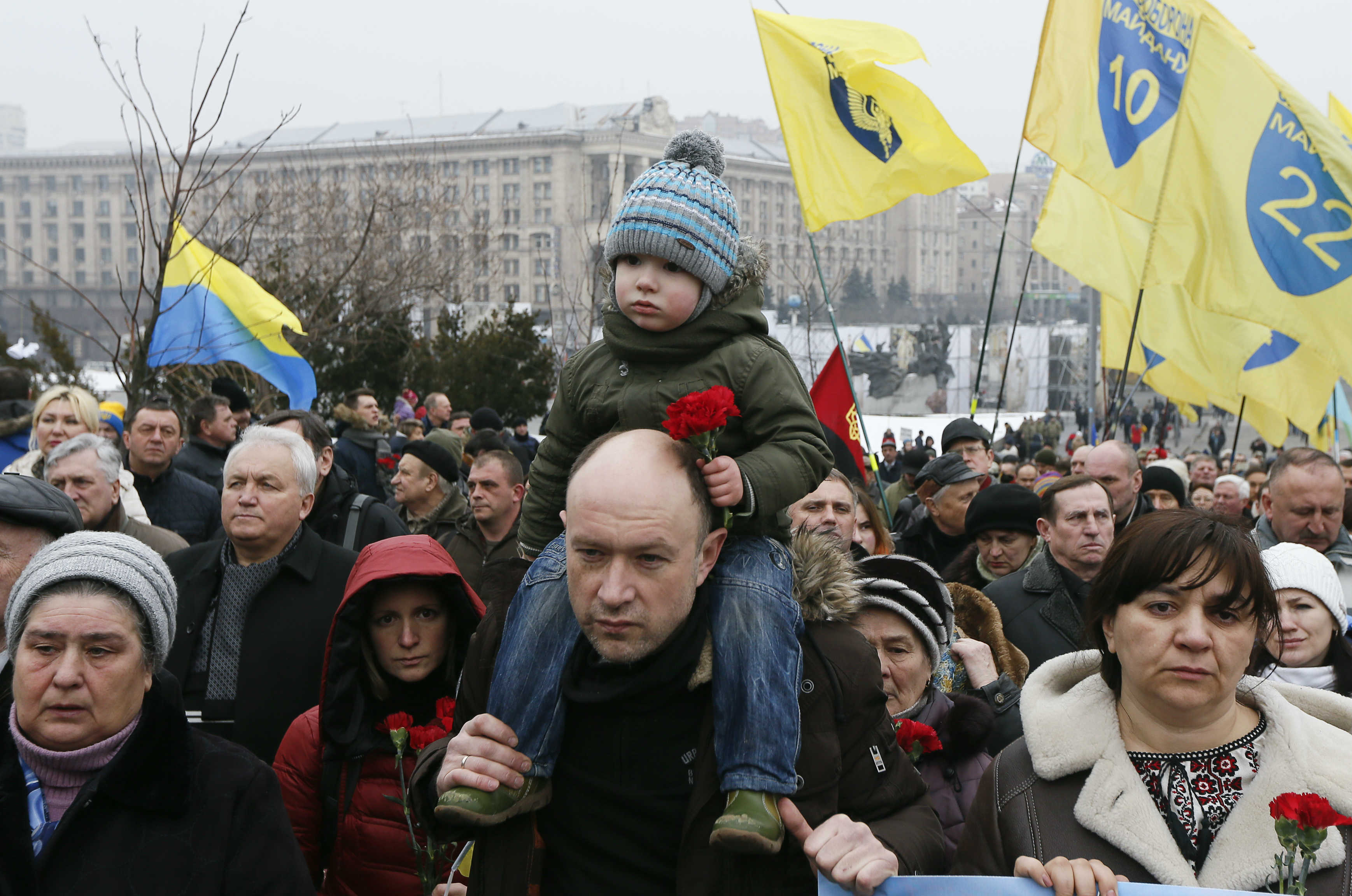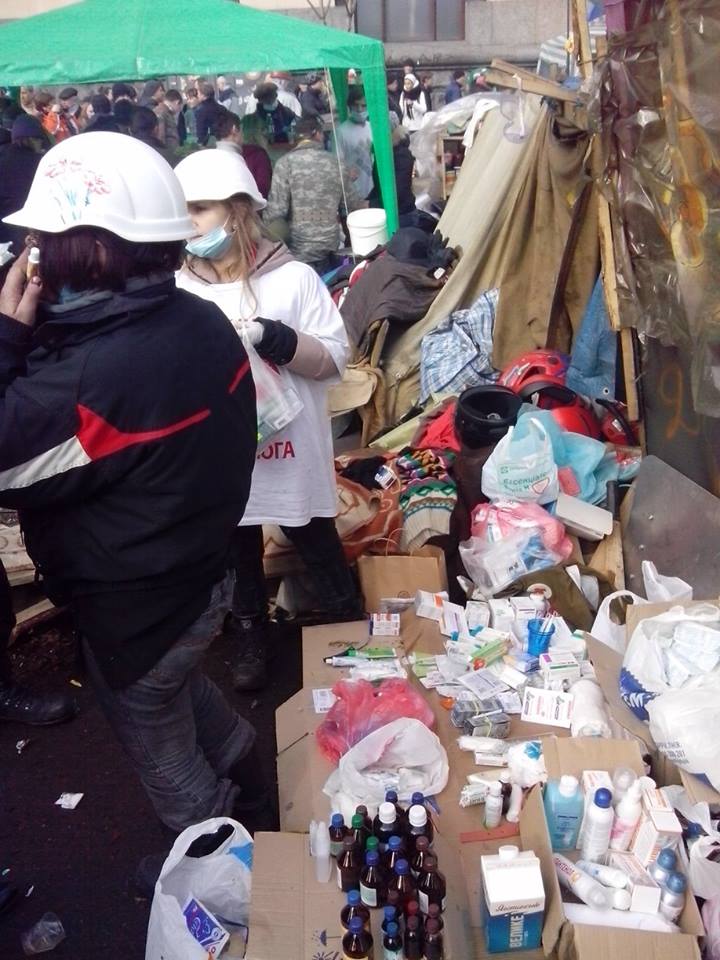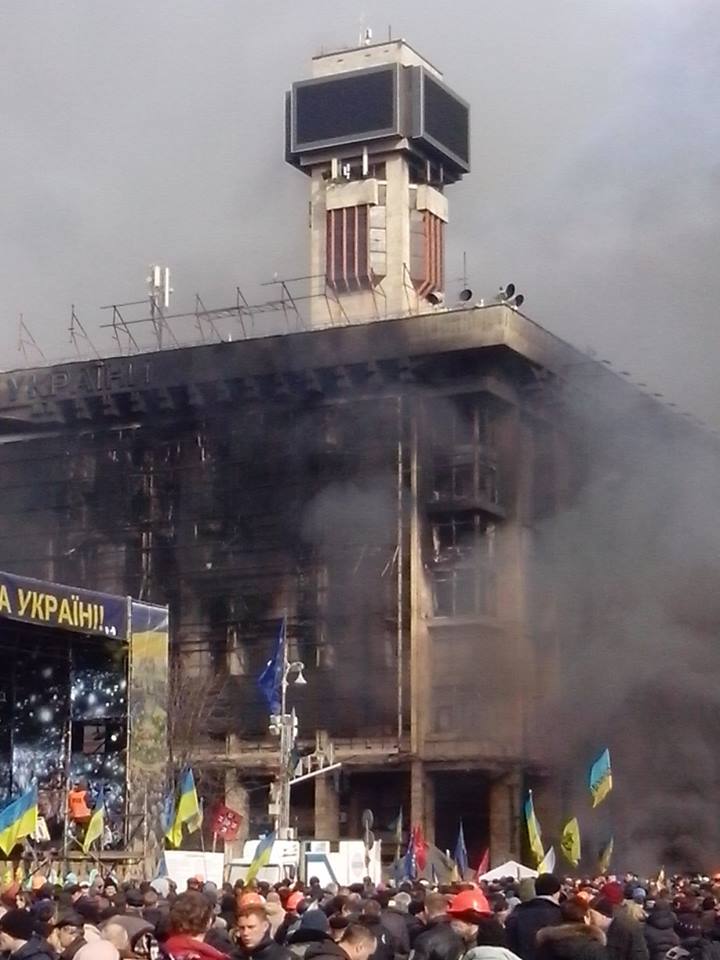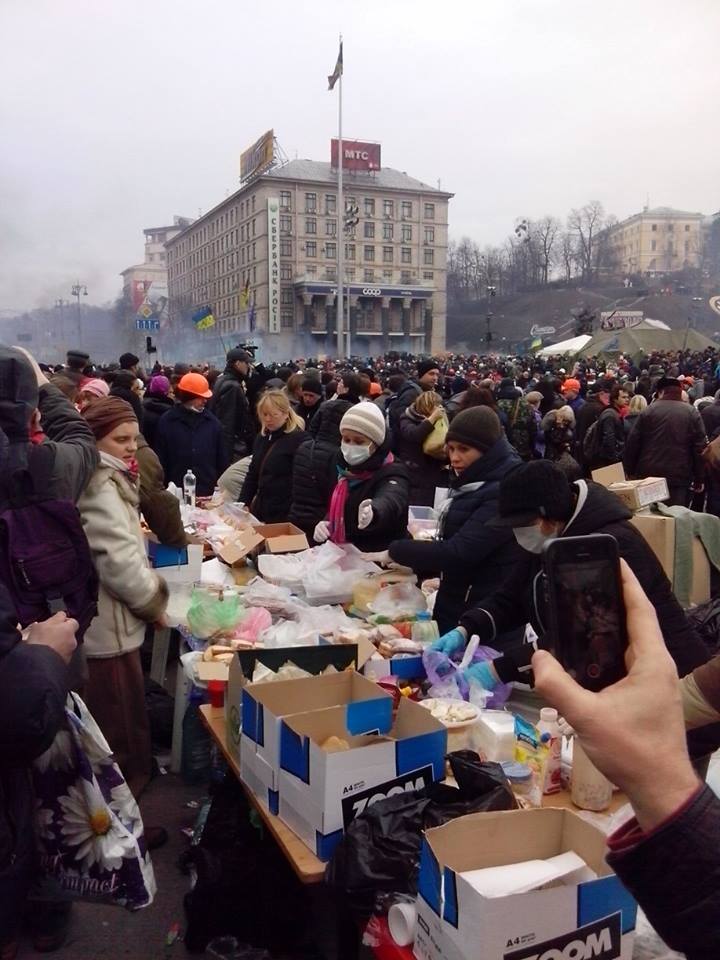 For those of us who were on the ground in Kyiv, Ukraine, in the middle of the burning barricades from February 18 to 20, 2014, we could have no idea where or when or how the revolution would end. During those three February days, more than one hundred were killed, thousands were wounded, and dozens went missing. Visiting the site of Ukraine’s revolution on the fourth anniversary of its bloodiest days, I offer these reflections.
For those of us who were on the ground in Kyiv, Ukraine, in the middle of the burning barricades from February 18 to 20, 2014, we could have no idea where or when or how the revolution would end. During those three February days, more than one hundred were killed, thousands were wounded, and dozens went missing. Visiting the site of Ukraine’s revolution on the fourth anniversary of its bloodiest days, I offer these reflections.
The Maidan is a moving place on these anniversaries; relatives place candles and flowers at the sites where their loved ones were killed, and strangers do the same.
One of the youngest to die on February 20 was 17-year-old Nazar Voytovych. There is a memorial to him, with his photo and some poetry which are attached to a tree just on the corner of the entrance to Globus and Hotel Ukrayina. I passed by the makeshift monument erected in the hours after he lost his life and it has hardly changed: a lady crossing herself repeatedly, probably a relative, but perhaps a stranger mourning a life lost too soon, stood watch.
The other thing that struck me as I walked around this year was the number of older people who were there with grandchildren. It’s almost like they’re making extra certain that these kids understand and appreciate what happened, pointing to the faces etched on the memorial stones. These are the heroes who stood in defiance of the cruel regime that was looting the country.
How we react is of course personal; my wife was close to tears much of the time; for me this is always a place of reflection and remembrance. Last year when I went to the Maidan, I couldn’t bring myself to write anything. I just tweeted a series of photographs. Reliving February 18 and 20 are hard for those of us who lived through them, but I don’t mind reliving February 19.
February 18 was brutal. The street battle along Instytutska Street and the clash inside Mariinsky Park were intense, with the protesters having retreated to the heart of the Maidan as the police had taken the first two fortifications on Instytutska Street. A new barricade was built and was burning by mid-afternoon, halfway across the back of the Maidan and from the fountain on the corner of Instytutska Street across to the Trade Union Building. On the stroke of 8 pm, the riot police started another advance against the protesters.
By day break on February 19, the fighting had just ended, the Maidan stood, and the Trade Union Building billowed smoke. This day was about rebuilding. Everyone brought something; one guy on the barricades a few metres from the riot police carried two loaves of bread. There is a table groaning with food, a new medical point that sprung up and was stocked with donated items, and a guy carrying a tire for the barricades. And of course people smashing up pavement to make the ammunition that the Maidan was defended with.

A table with donated medical supplies appeared in Kyiv, Ukraine, on February 19, 2014. Credit: Paul Niland.

Smoke billows out of the Trade Union Building in Kyiv, Ukraine, on February 19, 2014. Credit: Paul Niland.

After intense fighting on February 18, 2014, the next day was one of rebuilding. Here a make-shift kitchen stands in Kyiv, Ukraine, on February 19, 2014. Credit: Paul Niland
The Maidan had not only withstood the regime’s attack on February 18, it had rebuilt on February 19, and was even more determined. The word “Maidan” at this point is not a physical place; it is the collective of people and the common mentality they share.
On the morning of February 20, Berkut and the riot police retreated. They had occupied Instytutska Street since the afternoon of February 18, and now they were backing away up the hill. In battle, when your enemy retreats, you advance. As the protesters advanced, they walked into a trap. That higher ground wasn’t vacant: Berkut with AK-47s and a squad of snipers with high powered weapons awaited, and once the advancing protesters were in range, Instytutska Street became soaked in blood. In the middle of the kill zone, their wooden and metal shields and plastic helmets offered protesters no protection.
One after another people were slain in this orgy of violence. When people talk down the revolution, they try to portray it as a violent series of events, which is only partially true. The violence came from the corrupt authorities clinging to power.
Four years later, Ukraine is still waiting for justice to be meted out. As RFE/RL journalist Christopher Miller has noted, only two people have received punishment connected to the Maidan murders, and only one is serving a sentence. This record is a stain on the reputation of the authorities who have run the country since the revolution.
I will be on the Maidan tonight, and I have not forgotten. There will be thousands of people on the Maidan with me, either in that physical place or in the wider sense of what the Maidan stands for, and we demand justice.
Paul Niland is a longtime Kyiv resident and the founder of Statement Email Ltd. He tweets @PaulNiland.
Image: Participants attend a ceremony to commemorate the so-called "Nebesna Sotnya" (Heavenly Hundred), the people killed during the Ukrainian pro-European Union (EU) mass protests in 2014, in central Kyiv, Ukraine, February 18, 2017. REUTERS/Valentyn Ogirenko
